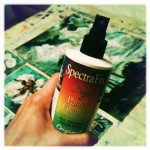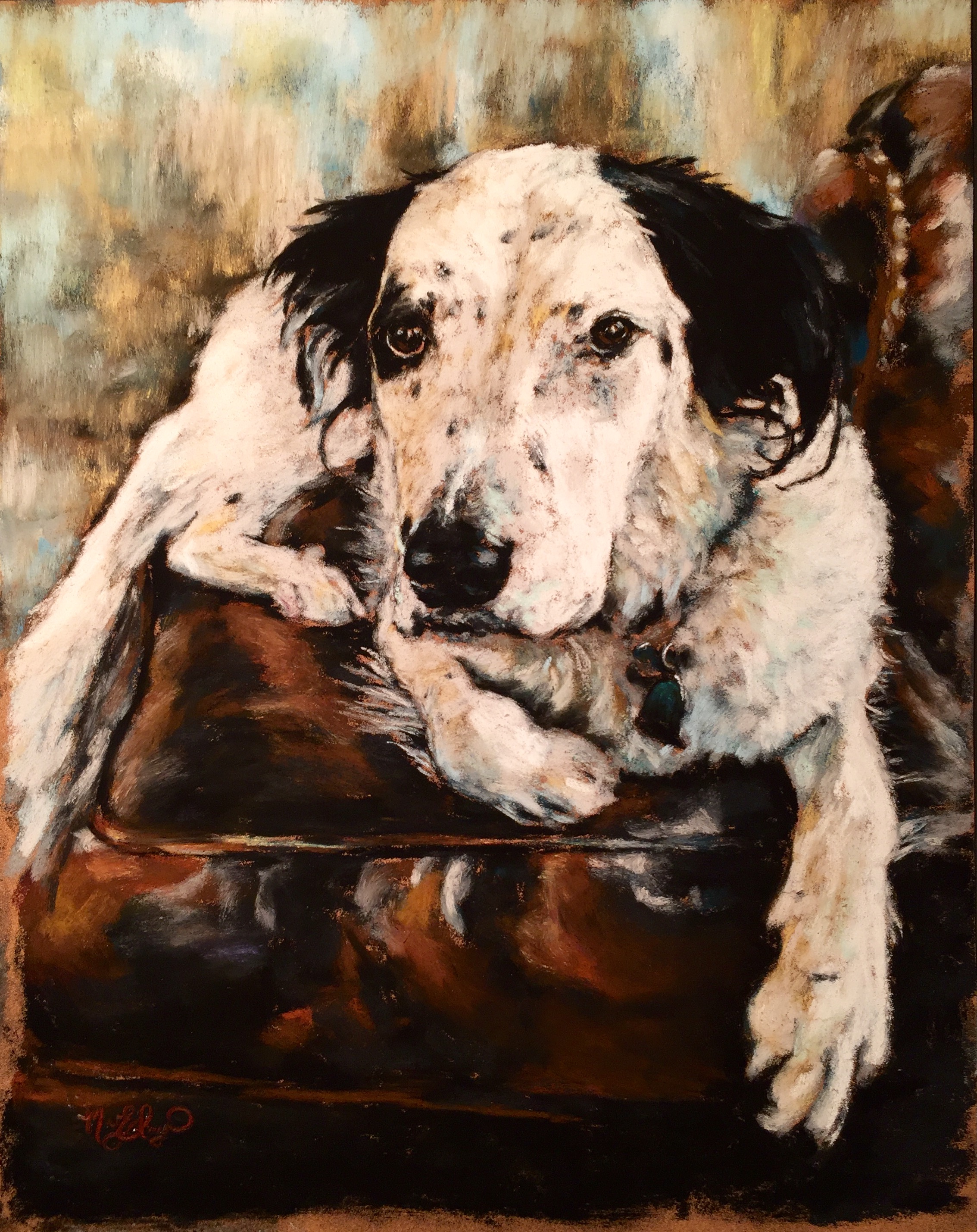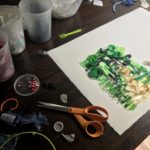Ah, pastels…so vibrant, so soft, so many possibilities. And so SMEARABLE!! After working for hours on a fine portrait, the last thing you want to have happen is someone come swipe it with their fingers.
Trust me. This has happened…
Little fingers have swiped right across the eyes of one of my completed pastel portraits. I’ve also had a big bouncy ball bounce off a portrait, a cat walk on and slide down (using claws!) a big commission, the wind catch a finished piece and slide it face down across a parking lot, a child’s jacket thrown on top of a piece while waiting to frame it, and on separate occasions, several customers at a frame shop come over and (for some reason) rub their fingers right on my pastel painting (???).
These pastels need protection!!!!
I am often asked about spraying pastels: to spray, or not to spray? I say YES!
 Find the right spray and learn the right technique, and your precious finished products will have a layer of defense against the dangers of the world. Because of spraying a fixative on my thick, layered pastel paintings, all of the tragedies listed above caused no lasting damage. Amazing, right?! I had to touch up the eyes smeared by little fingers, and offer a few touches of pastel to correct my cat’s dirty work, but the others just needed the dislodged dust tapped off. The picture which tried surfing in the parking lot was remarkably undamaged.
Find the right spray and learn the right technique, and your precious finished products will have a layer of defense against the dangers of the world. Because of spraying a fixative on my thick, layered pastel paintings, all of the tragedies listed above caused no lasting damage. Amazing, right?! I had to touch up the eyes smeared by little fingers, and offer a few touches of pastel to correct my cat’s dirty work, but the others just needed the dislodged dust tapped off. The picture which tried surfing in the parking lot was remarkably undamaged.
Besides protecting your pastel from mayhem, spraying also keeps your framing job neat and tidy…especially important if you’re toting your art from show to show, or shipping it to clients or your grandma.
Now, you may say, “I’ve RUINED my pastels with spray before! I just won’t do it!” I’ve had several students with this problem. Or you may say, “Spray darkens my whites!” I can speak personally on both accounts: I LOVE “puffy white things,” as a man pointed out to me at an art show: clouds, cotton, sheep…and I spray each of them. I also spray my portraits, when I’ve worked hard to get just the right skin color. Here are my tips for spraying correctly:
- Choose your spray well: don’t just buy the cheap can of spray! I like Spectrafix pastel fixative best, especially because it is non-toxic. I’ve had good luck with Blue Label spray as well, but it is not nearly as good to be around! I also have a can of Blair matte fixative that I use as back up.
- Go outside and lay your picture down FLAT.
- Give your spray a good test AWAY from your picture.
- starting on the ground next your picture, begin spraying in a continuous motion, about 18-24 inches above our art, swiping back and forth, allowing a fine mist to land on your picture. Don’t douse it!!! This is where many people go wrong…the spray should not be heavy.
- Let the first layer dry for about 2 minutes. If it’s humid outside, it may take longer.
- Turn your picture, or move your self, and repeat at a different angle.
If you use Spectrafix spray, your picture may look a little wet for a bit, but as the alcohol evaporates, the painting returns to normal. If you have any spattering from any kind of spray, once it dries you can touch up the spots with your pastels. (I’ve spattered a whole face before, being to impatient and using a can of spray that was running out! not recommended!)
If you are a pastel artist, what type of spray do you like best?
























This has happened to me many times! As a framer, ML, you know I have many similar stories as yours, Esp. People touching the art with their grubby oily fingers! Spraying is the way to go in my humble, non-artists, opinion. I’m enjoying reading your articles very much.
Here, here! And you definitely know what you’re talking about!! Thanks Carl 🙂